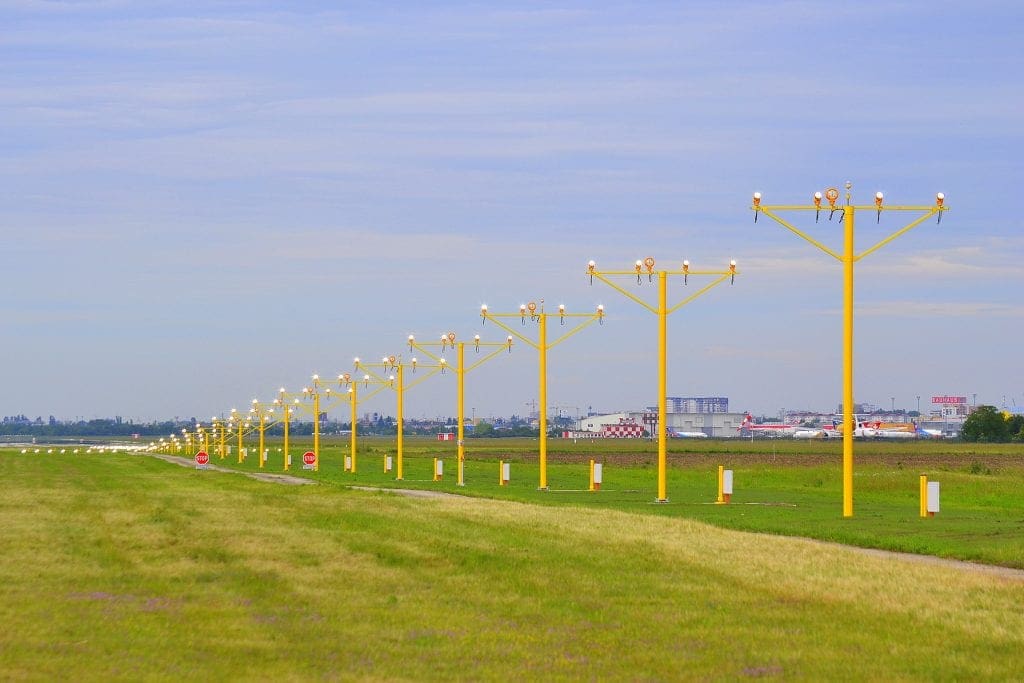Frangible structures are becoming increasingly important in various industries. However, despite their growing popularity, several misconceptions still surround them. In this article we’re myth busting some of the most common misconceptions about frangible structures. We hope to provide some clarity on their functionality, safety, and benefits.
Myth 1: Frangible structures are weak and unreliable
Some believe that the fact frangible structures break easily makes them weak. However this belief overlooks the sophisticated engineering behind frangible structures. They are designed to be robust enough to withstand environmental conditions like wind, rain, and snow. However they remain frangible under specific impact conditions. This means they can perform their intended function safely and reliably until or unless a collision occurs. At this point they break away to minimise damage.
In the aviation industry, frangible structures include runway approach masts or instrument landing system (ILS) components. They must meet stringent international standards for strength and durability. They are rigorously tested to ensure they remain functional under normal operating conditions, providing reliable performance where it matters most.
Myth 2: Frangible structures are only useful in aviation
While frangible structures are most commonly associated with airports and aviation, their applications extend far beyond this industry. The fundamental principle behind frangible design (minimising damage and enhancing safety upon impact) can be beneficial in many other contexts.
For example in transportation infrastructure, frangible structures can be used in highway signage and barriers. They could improve safety in case of vehicular collisions, for instance. In industrial settings, they can protect sensitive equipment or personnel by safely collapsing in the event of an accident. Even in urban planning, frangible structures can be employed to create safer public spaces. They thereby reduce the risk posed by high-impact collisions.

Myth 3: Frangible structures are expensive and cost-inefficient
The long-term cost savings associated with frangible structures usually far outweigh the initial investment. It’s true they may have a higher upfront cost compared to traditional rigid structures. However frangible structures significantly reduce the costs related to repairs, maintenance, and operational downtime.
After an impact, traditional structures often require extensive repairs or complete replacement. This can lead to high costs and potential operational downtime or delays. Frangible structures, however, are designed to minimise damage, allowing for quick, cost-effective repairs and a swift return to normal operations. This saves money and reduces downtime, which is particularly crucial in environments like airports where delays can be costly.
Myth 4: Frangible structures are difficult to maintain
This is definitely not the case! Frangible structures are typically low-maintenance because they are specifically engineered to withstand environmental stresses without frequent upkeep. They are built to last under normal conditions, and their frangibility only comes into play during an impact. This means routine maintenance is often minimal.
Myth 5: Frangible structures are unsafe because they break easily
The idea that frangible structures are unsafe because they break easily is a misunderstanding of their purpose. The primary safety feature of frangible structures is precisely their ability to break or collapse upon impact. This reduces the risk of injury or damage. By breaking away in a controlled manner, they protect both the impacting object (maybe an aircraft or vehicle) and any people nearby.
In an airport setting, for example, a frangible approach mast will break away when struck by an aircraft. This is far safer than a rigid pole that could cause significant damage to the aircraft. It could also potentially lead to a more serious incident. The controlled collapse of frangible structures is a deliberate design feature that enhances safety.

By debunking these common myths, it is clear that frangible structures are reliable and versatile. Not only this, but they’re also a smart investment for any industry concerned with safety and operational efficiency. Whether in aviation, transportation, or industrial applications, these structures provide a robust solution designed to protect people, equipment, and operations. As more industries recognise their value, the adoption of frangible structures will continue to grow. This will, in turn, contribute to safer and more efficient environments worldwide.